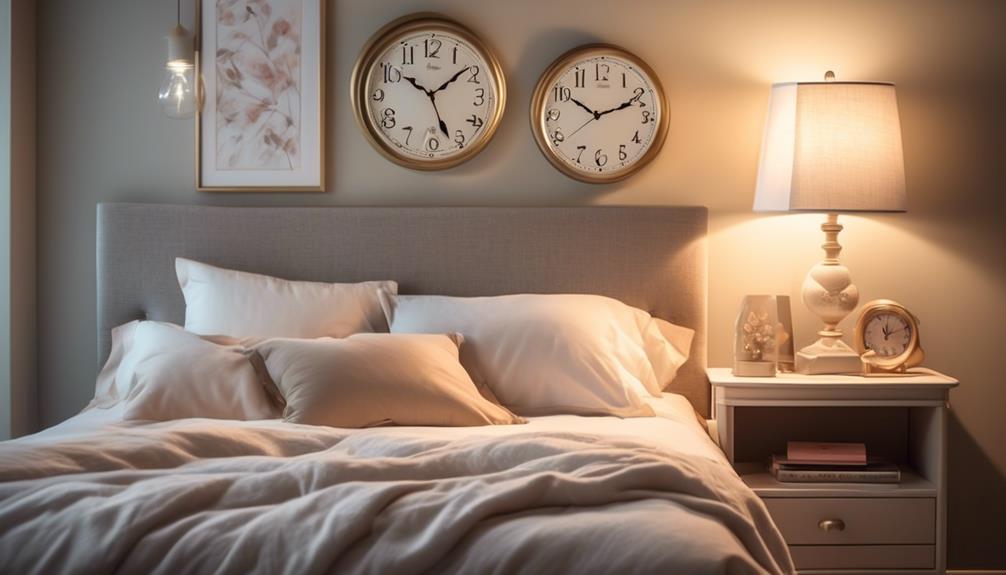We recently encountered a scenario involving an older person exhibiting signs of Sundowner’s Syndrome, a condition known for causing increased confusion and restlessness in the late afternoon and evening.
Managing Sundowner's Syndrome is a complex task that requires a multifaceted approach to ensure the well-being of those affected.
From establishing consistent routines to exploring alternative therapies, there are various strategies and insights that can be beneficial in navigating this challenging condition.
By implementing a combination of tailored approaches, caregivers can significantly improve the quality of life for individuals with Sundowner's Syndrome.
Key Takeaways
- Consistent routines and familiar activities can help manage Sundowner's Syndrome.
- Creating a calming environment with soft lighting and minimal distractions is important.
- Alternative therapies like music and aromatherapy can provide relief for symptoms.
- Consulting with healthcare professionals specializing in dementia care is crucial for effective support.
Signs and Triggers of Sundowner's Syndrome
As caregivers, we must keenly observe the increased mood swings, anxiety, and restlessness that can signal the onset of Sundowner's Syndrome in our loved ones. For those living with dementia or Alzheimer's disease, the evening can bring forth a challenging time marked by these symptoms. It's crucial for family members to recognize these signs, as they may indicate the presence of Sundowner's Syndrome. Triggers such as dimming light, a noisy environment, or sudden changes in routine can exacerbate these symptoms, leading to increased fear and insecurity in our loved ones. The evening and darkness seem to heighten these feelings, making it essential for us to create a calm and soothing environment during these times.
Healthcare professionals can offer valuable insights into managing Sundowner's Syndrome and provide guidance on how to best support those experiencing these symptoms. By working closely with healthcare professionals and implementing non-pharmacological interventions like music therapy or engaging in meaningful activities, we can help alleviate the effects of Sundowner's Syndrome on our loved ones. Together, as a family, we can navigate this challenging aspect of caregiving with empathy and understanding.
Establishing Consistent Routines

Navigating the challenges of Sundowner's Syndrome involves establishing consistent routines to provide structure and stability for our loved ones experiencing these symptoms. Setting a daily schedule with regular meal times, activities, and bedtime can offer predictability. To help individuals with Sundowner's Syndrome understand their routine, consider creating a visual calendar or checklist. Minimizing changes or disruptions in the daily schedule can reduce confusion and anxiety. Involving them in enjoyable and familiar activities promotes comfort. Reminders or cues like alarms aid in smooth transitions between activities.
| Tips for Establishing Consistent Routines |
|---|
| Set a daily schedule with regular times for meals, activities, and bedtime. |
| Create a visual calendar or checklist for easy understanding. |
| Minimize changes to reduce confusion and anxiety. |
| Involve them in familiar activities to promote comfort. |
| Use reminders or cues for smooth transitions. |
Creating a Calming Environment
Creating a calming environment involves utilizing soft lighting or natural light to establish a soothing atmosphere for individuals experiencing Sundowner's Syndrome. When dealing with Sundown Syndrome in persons, the environment plays a crucial role in managing symptoms effectively.
Here are some practical ways to create a calming space for those experiencing symptoms of sundowning:
- Use soft lighting: Gentle lighting helps reduce agitation and confusion, promoting relaxation.
- Minimize distractions: By reducing noise and other distractions, individuals can feel more at ease and less overwhelmed.
- Incorporate soothing sounds: Playing calming music or sounds can help improve sleep quality and create a peaceful ambiance.
Remember that the stage of dementia can worsen sundowning, making it essential to create a tranquil setting to help with symptoms. By implementing these strategies and focusing on creating a calming environment, you can provide valuable support to those affected by Sundowner's Syndrome.
Utilizing Alternative Therapies

To continue supporting individuals experiencing Sundowner's Syndrome, we can explore the benefits of utilizing alternative therapies like therapeutic massage, soothing music, and essential oils to reduce anxiety and promote relaxation.
Sundown syndrome, also known as sundowning, often peaks during the evening hours and can cause increased restlessness, confusion, and sleep disturbances. In individuals with dementia, sundowning may be linked to changes in the brain associated with conditions like Lewy Body dementia in the middle stages.
By incorporating non-pharmacological interventions such as music therapy, aromatherapy, and gentle touch techniques like hand massages, we can create a calming environment that eases symptoms during this challenging time of day. Additionally, complementary therapies such as art therapy, music therapy, and mindfulness-based cognitive therapy can offer further support and symptom reduction.
It's essential to be creative and flexible in managing sundown syndrome, seeking guidance from healthcare professionals specializing in dementia care when needed. By exploring alternative therapies thoughtfully, we can help improve quality of life and promote better sleep patterns for individuals experiencing sundowning symptoms.
Consulting With Healthcare Professionals
When seeking assistance for managing sundown syndrome, it's crucial to schedule an appointment with a healthcare professional specializing in dementia care. Consulting with healthcare professionals who understand the complexities of sundowning in individuals with dementia is essential for developing effective strategies.
Here are three key points to consider when collaborating with healthcare professionals:
- Discuss with the loved one's doctor about any cognitive decline or medical conditions that could be contributing to sundowning.
- Seek guidance from healthcare professionals on tailored interventions for managing sundowning, such as medication options or therapy recommendations.
- Regularly consult with healthcare professionals to assess the effectiveness of interventions and make necessary adjustments to support persons with dementia effectively.
Frequently Asked Questions
What Are the Activities for Sundowners Syndrome?
We find that engaging in calming activities like listening to music or gentle exercise can be very helpful for managing sundowner's syndrome.
Using natural or soft lighting in the evening, maintaining routines, and maximizing activity earlier in the day are also effective strategies.
It's important to avoid challenging tasks around dusk and at night.
These activities can make a significant difference in managing symptoms and improving quality of life.
What Are Two Appropriate Care Approaches That May Be Used to Assist With Sundowning?
We find that two appropriate care approaches for assisting with sundowning are maintaining a consistent routine and engaging in calming activities.
While some may question the effectiveness of these methods, we believe they can truly make a difference in managing sundowning episodes.
What Is the First Line Treatment for Sundowning?
When addressing sundowning, our go-to approach involves creating a serene setting and sticking to routines. We adjust mealtimes, plan engaging activities, and amp up productivity during daylight hours. By steering clear of challenging tasks in the evening, symptoms can be reduced.
Relaxing activities like music and soft lighting can also help. Medications should be a last resort, used cautiously under professional guidance. Other options like music and pet therapy can be beneficial too.
What Triggers Sundowning?
When sundowning occurs, triggers such as changes in routine, unfamiliar environments, overstimulation, hunger, thirst, untreated pain, and underlying medical issues can lead to increased restlessness and agitation. Dimming light, chaotic surroundings, and loud noises can exacerbate symptoms.
Creating a calm environment, maintaining routines, and addressing basic needs can help manage sundowning. By being proactive and mindful of triggers, we can provide better support for those experiencing sundowning.
Conclusion
In conclusion, managing Sundowner's Syndrome requires understanding and patience.
Did you know that approximately 20% of individuals with dementia experience symptoms of Sundowner's Syndrome?
By implementing strategies like establishing routines, creating a calming environment, and seeking professional help, we can better support our loved ones.
Remember, consistency and compassion are key in providing care for those with Sundowner's Syndrome.
Together, we can make a positive impact on their quality of life.









